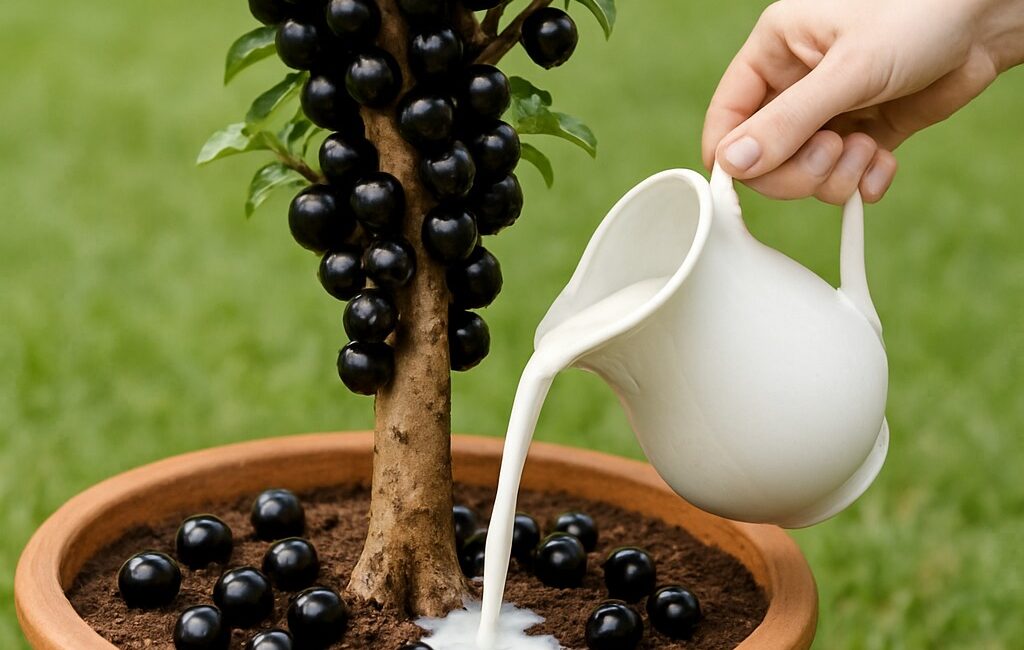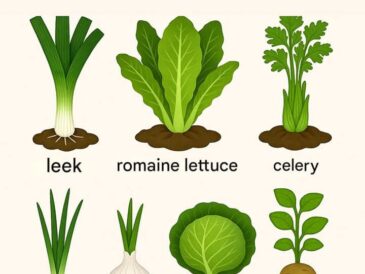Natural Growth Promoters (Aloe Vera)
Aloe vera supplies auxins and gibberellins, hormones that regulate cell elongation and division in roots, enhancing nutrient uptake efficiency.
Disease Resistance (Cinnamon)
Cinnamon contains cinnamaldehyde and other compounds that suppress fungal growth, reducing root rot risk.
Microbial Boost (Milk)
Milk encourages beneficial bacteria and fungi in the soil that decompose organic matter and release plant-available nutrients.
Complementary Cultural Practices for Optimal Jabuticabeira Fruiting
Beyond fertilization, several horticultural practices support healthy growth and fruit abundance.
Soil Management
- pH: Maintain slightly acidic soil (pH 5.5–6.5) optimal for jabuticabeira nutrient uptake.
- Organic Matter: Incorporate compost or well-aged manure yearly.
- Drainage: Ensure soil drains well to prevent waterlogging, which can cause root rot.
Mulching
Apply a thick layer of organic mulch (wood chips, leaves, straw) around the tree base, avoiding contact with the trunk to:
- Retain soil moisture.
- Suppress weeds.
- Moderate soil temperature.
- Feed beneficial soil organisms as mulch decomposes.
Watering Regime
- Deep, infrequent watering encourages deep root growth.
- Adjust watering frequency according to rainfall and temperature.
- Avoid drought stress, especially during flowering and fruit set.
Pruning
- Remove dead, diseased, or weak branches to improve air circulation.
- Light pruning encourages fruiting on older wood but avoid heavy pruning as jabuticabeira flowers on mature branches.
Pest and Disease Monitoring
- Inspect regularly for common pests like aphids, scale insects, and fruit flies.
- Use organic controls such as neem oil or insecticidal soap when necessary.
Propagation Tips: Growing Your Own Jabuticabeira from Seed or Grafting
From Seed
- Soak seeds in warm water for 24 hours to soften the hard coat.
- Sow in a well-draining seed mix.
- Maintain warm temperatures (around 25°C) and consistent moisture.
- Germination may take 15–30 days.
- Transplant seedlings once they have 4–6 true leaves.
Grafting
- Grafting onto rootstocks can improve vigor and disease resistance.
- Use compatible rootstocks like Plinia trunciflora.
- Best done in early spring.
Troubleshooting Common Problems
| Problem | Symptoms | Likely Cause | Solution |
|---|---|---|---|
| Yellowing leaves | Chlorosis | Nutrient deficiency (N, Fe) | Fertilize with balanced nutrients, check pH |
| Poor fruit set | Few flowers, flower drop | Low phosphorus, excess N | Apply phosphorus-rich fertilizer, reduce N |
| Root rot | Wilting, blackened roots | Waterlogging, fungus | Improve drainage, treat with fungicide |
| Pest infestation | Sticky leaves, holes, visible pests | Aphids, scale, fruit flies | Use organic insecticides, manual removal |
| Leggy seedlings | Long stems, sparse leaves | Insufficient light | Increase light intensity or duration |
Advanced Techniques to Enhance Jabuticabeira Growth and Fruiting
Mycorrhizal Fungi Inoculation
Mycorrhizal fungi form symbiotic relationships with plant roots, increasing nutrient and water absorption. Inoculating jabuticabeira roots during transplanting can improve resilience and fruiting.
Foliar Feeding
Spraying diluted nutrient solutions on leaves can correct micronutrient deficiencies rapidly and improve flowering.
Use of Biochar
Incorporating biochar into the soil increases nutrient retention and microbial activity, creating a healthier root environment.
Real-Life Success Stories
- Maria, Brazil: “Since applying this natural fertilizer monthly, my jabuticabeira tripled its fruit production. The fruits are larger and sweeter.”
- John, Florida: “My jabuticabeira was struggling until I started using this mix. It revitalized the soil and boosted flowering.”
- Ana, Portugal: “The tree is thriving with this recipe, and the best part is that it’s completely natural and safe.”
Final Thoughts: Your Jabuticabeira’s Fruiting Potential is in Your Hands
By combining nutrient-rich, natural fertilization with proper watering, pruning, and soil care, your jabuticabeira can reward you with an abundance of delicious fruits year-round. This one-cup recipe, easy to prepare at home with everyday ingredients, is a sustainable, effective way to nourish your tree from the roots up.
Start applying this fertilizer today and witness your jabuticabeira flourish into a fruitful centerpiece in your garden!




